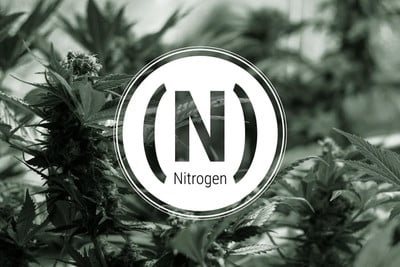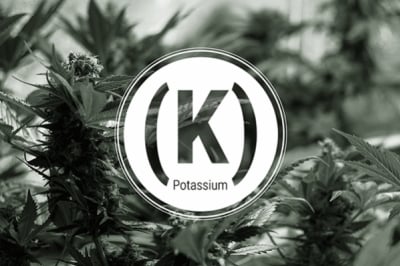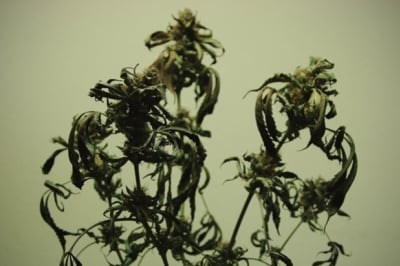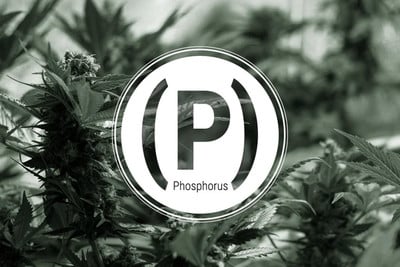.

Amino Acids — Here's What They Do For Cannabis Plants
Amino acids are crucial for humans, but what about cannabis plants? Take a glimpse into the world of protein building for plants, and see how you can support plant development and yield with amino acids.
AMINO ACIDS — WHAT DO THEY MEAN FOR CANNABIS PLANTS?
Nitrogen, phosphorus, and potassium are the three main pillars of nutrient solutions and fertilisers, but there are countless other nutrients that your cannabis plants need in order to produce the best possible harvest. Amino acids are one of them. In this article, we’ll show you how amino acids affect cannabis plants and help them produce bigger, more resinous buds.
WHAT ARE AMINO ACIDS?
You may have noticed that amino acids get a lot of attention from bodybuilders and other athletes. That’s because they play a key role in the synthesis of protein, which, as you probably know, is super important for sports recovery and muscle growth. Amino acids are the building blocks of protein, and the foundation of both plant and animal life.
But what do amino acids do for cannabis?
WHY IS PROTEIN IMPORTANT FOR CANNABIS?
Just like proteins are important for the human body, they are equally important for the growth and development of plants.
For example, proteins help plants:
- Facilitate the growth of intracellular plant structures
- Promote energy generation
- Stimulate metabolic processes
- Facilitate the absorption and transportation of nutrients
So, where do plants get these vital proteins from? Well, unlike humans, plants can’t source proteins or amino acids from other organisms. Instead, they need to create their own amino acids, and then use these to build protein. That's why gardeners, much like athletes, go wild for amino acid supplements.
Amino acids help plants by…
- Increasing their production of chlorophyll, which ultimately improves their ability to photosynthesise
- Serving as an easily absorbable form of nitrogen
- Stimulating the synthesis of key vitamins
- Improving their resistance to pests and diseases
- Boosting the strength of their cells
Amino acids also serve as the precursors to auxins, a group of plant hormones produced in the meristems—the apex of the stems where new leaves and stems are born.
Auxins play a key role in the plant, activating genes for plant growth and development by triggering a multitude of vital plant functions. In other words, they determine what its size and architecture will look like. Auxins influence the development of branches, flowers, and roots, and even help to regulate the photoperiod response of the plant.
Some amino acids, like cysteine, also work together with antioxidants like glutathione to help cannabis plants deal with oxidative stress, which can be caused by high-intensity lighting, some nutrient solutions, and high levels of CO₂.
Unlike humans, plants can synthesise all the amino acids they need to survive and develop properly. Unfortunately, however, amino acid synthesis is a really high-energy process, and plants may struggle to produce enough amino acids when exposed to stress.

WHAT FACTORS AFFECT A PLANT’S ABILITY TO SYNTHESISE AMINO ACIDS?
Any kind of stress can affect a plant’s ability to produce enough amino acids.
This includes:
• Drought
• Temperature extremes
• Poor soil health
• Pests
• Diseases
• Poor lighting
• Lack of space
• Poor root health
WHAT DOES ALL OF THIS MEAN FOR YOUR WEED PLANTS?
If you really want to push your plants to their extreme in terms of floral growth and resin production, you should look into amino acid fertilisers. By making amino acids readily available to your plants, they’ll be able to use crucial energy to grow and bloom, rather than focusing on synthesising amino acids themselves.
HOW TO GIVE YOUR PLANTS AMINO ACIDS
Plants can absorb amino acids via their roots and leaves. They can also benefit from amino acids during both their vegetative and flowering phases.
The fastest way for plants to absorb amino acids is via their leaves. In fact, the foliar application of amino acids is believed to improve the transportation of nutrients, increase transpiration, and boost photosynthesis.
Hence, we generally recommend feeding your plants with foliar amino acid fertilisers. When doing so, however, carefully measure the amount of fertiliser you use, as—like with any nutrient—overfeeding can damage your plants.
What Kind Of Amino Acids Do Cannabis Planta Need?
Amino acids differ depending on their structure, and every amino acid (except glycine) can be produced either in D- or L-form. Without going into too much detail, the difference between D- and L-form amino acids is basically the way their atoms are structured.
While fertilisers are available with both D- and L-form amino acids (also known as L-enantiomer amino acids), we highly recommend using the latter, as they are much easier for your plant to absorb.
When buying amino acid fertilisers, make sure to choose products that contain all 20 structural amino acids (protein producers) in their L-enantiomer form, including:
| Alanine (Ala, A) |
| Arginine (Arg, R) |
| Aspartic acid (Asp, D) |
| Cysteine (Cys, C) |
| Glutamic acid (Glu, E) |
| Glutamine (Gln, Q) |
| Glycine (Gly, G) |
| Histidine (His, H) |
|
Asparagine (Asn, N) |
| Isoleucine (Ile, I) |
| Leucine (Leu, L) |
| Lysine (Lys, K) |
| Methionine (Met, M) |
| Phenylalanine (Phe, F) |
| Proline (Pro, P) |
| Serine (Ser, S) |
| Threonine (Thr, T) |
| Tryptophan (Trp, W) |
| Tyrosine (Tyr, Y) |
| Valine (Val, V) |
| Alanine (Ala, A) | Arginine (Arg, R) | Aspartic acid (Asp, D) |
| Cysteine (Cys, C) | Glutamic acid (Glu, E) | Glutamine (Gln, Q) |
| Glycine (Gly, G) | Histidine (His, H) |
Asparagine (Asn, N) |
| Isoleucine (Ile, I) | Leucine (Leu, L) | Lysine (Lys, K) |
| Methionine (Met, M) | Phenylalanine (Phe, F) | Proline (Pro, P) |
| Serine (Ser, S) | Threonine (Trh, T) | Tryptophan (Trp, W) |
| Tyrosine (Tyr, Y) | Valine (Val, V) |









































